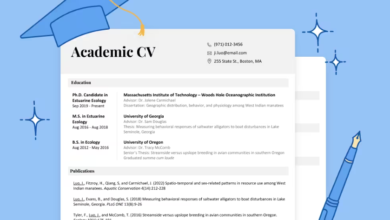Retirement Plan Strategies for Small Businesses

Introduction
For small business owners and their employees, the prospect of retirement planning often takes a back seat to day-to-day operations and growth goals. However, addressing retirement savings early not only builds financial security for staff but also strengthens your business in a competitive talent market. One powerful way to support financial growth is by implementing retirement savings for small teams—an approach that helps small businesses retain valued employees, enhance company culture, and secure long-term success.
Establishing a retirement plan demonstrates your commitment to the well-being of both your business and your employees. A well-designed retirement savings program can be a cornerstone of your benefit package, setting your company apart from competitors who do not offer similar resources. Plus, new tax credits and legislative tools make establishing these plans more affordable and accessible for small employers.
Importance of Retirement Plans for Small Businesses
Offering a retirement plan is more than just a financial perk; it’s a strategic decision that yields long-lasting benefits for both employers and employees. A comprehensive workplace retirement plan supports financial wellness, enabling employees to save funds and make informed investment decisions for their future. For business owners, these plans serve as a critical retention tool, essential for competing with larger companies vying for top talent. More than half of small business owners believe retirement plans give them a competitive edge in hiring and retaining staff, according to Business News Daily, which outlines the best retirement options available for small businesses.
Moreover, when employees are confident in their financial futures, overall morale and productivity improve. Retirement plans signal to your team that their long-term well-being truly matters, which fosters loyalty and commitment.
Common Retirement Plan Options
Small businesses have access to a range of retirement plan options, each designed to suit different operational sizes and needs:
- 401(k) Plans: These popular plans allow employees to contribute pre-tax earnings toward retirement. Employers may offer matching contributions, giving workers a direct, immediate boost to their savings.
- SIMPLE IRA Plans: Tailored to businesses with up to 100 employees, SIMPLE IRAs are straightforward to set up and manage. Employers contribute via a match or a fixed percentage, with fewer administrative headaches than larger plans.
- SEP IRA Plans: Ideal for self-employed individuals or small businesses, SEP IRAs offer high contribution limits and allow employer-only contributions, minimizing administrative requirements.
- Pooled Employer Plans (PEPs): Introduced through recent legislation, PEPs enable multiple employers to consolidate their retirement plans under a single, large plan, thereby lowering costs and simplifying administrative tasks.
See also: How to Use an SMM Panel to Grow Your Social Media Fast
Tax Incentives and Legislation
To help small businesses implement retirement plans, recent laws, such as the SECURE 2.0 Act, have introduced valuable tax incentives. Businesses with fewer than 50 employees can claim tax credits of up to $5,000 per year for the first three years to offset setup and administrative costs. There’s also a separate $500 annual tax credit for adding automatic enrollment features, which increases participation and savings rates among employees.
Choosing the Right Plan
Picking the best retirement plan for your small business depends on several factors:
- Size and Structure: Consider the number of employees and whether you want a plan that includes yourself as the owner.
- Administrative Capability: Evaluate the complexity you can manage; younger or leaner companies may favor SIMPLE or SEP IRAs due to their ease of setup and low maintenance requirements.
- Contribution Flexibility: Decide if you want to offer matching or non-elective contributions and review the contribution limits for each type of plan.
Consultation with a financial advisor can provide personalized recommendations to maximize both your team’s and your retirement readiness.
Implementation and Administration
Rolling out a retirement plan for your small business requires careful planning for smooth execution and ongoing compliance:
- Select Your Plan: Consider your company’s priorities and workforce profile to determine the best options.
- Prepare Documents: Secure the required legal plan documents that define terms, eligibility, and benefits.
- Employee Communication: Clearly explain how the plan works, including eligibility guidelines and enrollment steps, to maximize participation.
- Manage Ongoing Tasks: Facilitate payroll deductions, monitor employer contributions, and keep up with federal and state filing obligations.
Employee Education and Engagement
For a retirement plan to deliver value, employees must understand and actively participate. Education is key. Small businesses can host workshops, provide informational sessions, and distribute easy-to-understand guides about investing and saving. Consider offering individual consultations for employees with unique financial concerns or questions. When workers grasp how the plan benefits them, participation rises and so does employer ROI. Providing consistent and clear communication helps demystify retirement planning, empowering employees to take control of their financial futures. Over time, this can lead to a more financially confident and loyal workforce. Ultimately, a well-educated team maximizes the benefits offered—enabling you to make the most of your investment as an employer.
Monitoring and Adjusting the Plan
Workplace retirement plans aren’t “set it and forget it.” Regularly review participation rates, gather employee feedback, and assess overall plan performance—including fund options and fees. This continuous monitoring ensures that your benefits remain competitive, compliant, and aligned with your company’s evolving needs.
As your business grows, revisit plan features, update contribution strategies, and consider adding new benefits as appropriate. These adjustments protect the interests of both the company and its workforce, keeping your retirement program robust and flexible.




